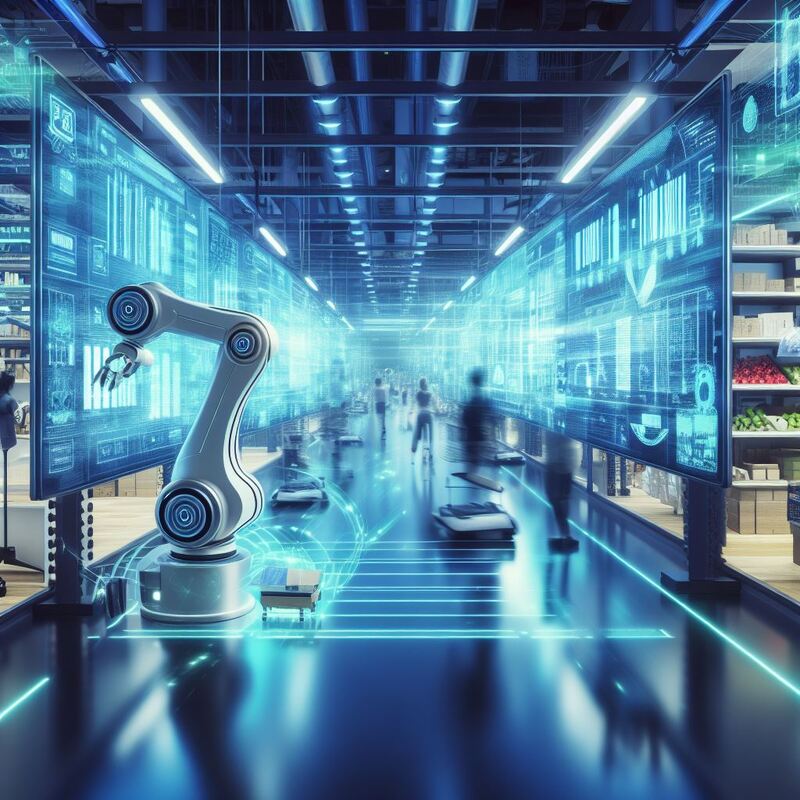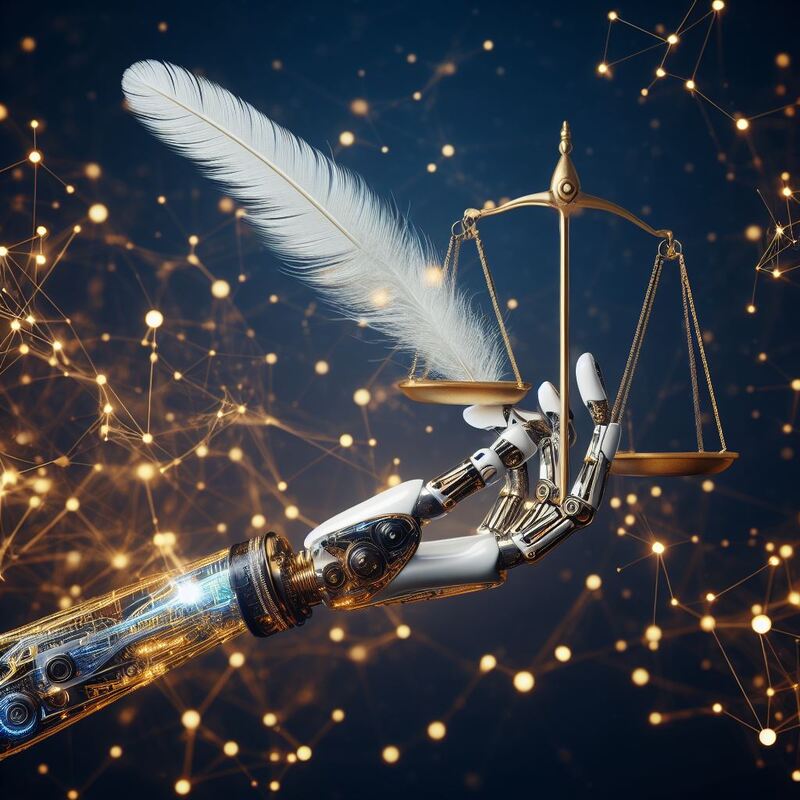So, you’ve stumbled upon the term ‘deep learning,’ and now you’re scratching your head, wondering what this tech jargon is all about, right? Well, buckle up because I’m about to take you on a thrilling ride through the labyrinth of this tech marvel. We’ll investigate what makes deep learning different from your run-of-the-mill, everyday machine learning. And get this: it’s not just for the nerdy types who spend their days theorizing over their keyboards! We’re talking real-world, tangible applications here. So, are you ready to jump headfirst into this deep pool of learning (pun intended) and see how it’s quietly reshaping our future? Let’s dive in and remember, there’s no life preserver in deep learning – it’s swim or be swum!
Understanding Deep Learning
So, you’re tagging along with me on this wild ride into the exhilarating world of deep learning? Buckle up, my friend! Let’s get this show on the road.
First, deep learning is like that nerdy cousin of machine learning who wears glasses and has something for artificial neural networks with a gazillion abstraction layers. It loves to play with complex patterns in data sets. It’s like a kid with a giant Lego set, only way more complicated, and unfortunately, no colorful bricks.
Let’s hop in our time machine and zoom back to the 1940s. Back then, scientists started flirting with creating machines that could mimic the human brain’s functionality. They were like, “Hey, wouldn’t it be cool if we could make a machine brain?” Fast forward to the 21st century, and boy, has that brainchild grown up! It’s even started using neural networks, which is a total game-changer.
For those wondering, neural networks are our brain’s fan club. They’re computing systems that want to be like the human brain, with its all-star network of neurons. They’ve got their pom-poms out, ready to recognize patterns and interpret sensory data. They’re like detectives, sifting through raw input and slapping labels on them. So, here’s to understanding deep learning, the nerdy cousin with a sense of humor!
Critical Components of Deep Learning
Alright, folks, gather around. I will let you in on the secret sauce of deep learning. You have to wrap your noggin around three central ingredients: data, algorithms, and computational power.
Now, my dear friend, data is our little model’s appetizer. It’s like feeding a baby: the more diverse, the better. Next up, we’ve got algorithms. They’re like the instruction manual for flat-pack furniture but for our model. These snazzy ones are based mainly on Neural network basics, like the golden rules.
And last but not least, computational power is the steak and potatoes of the operation. It’s like the engine of a sports car, the thing that makes the algorithm go zoom!
Here’s a handy dandy cheat sheet for you:
| Component | Description | Example |
|---|---|---|
| Data | The appetizer for the model | Images, Text |
| Algorithms | The instruction manual for the model | Neural Networks Basics |
| Computational Power | The engine that makes the algorithm zoom | GPU, CPU |
Now, let’s remember about Optimization Techniques. They’re like the personal trainers for our model, helping it be strong but also precise and effective. They’re the ones who ensure your deep learning system isn’t just a beefy Hulk but a Hulk with a PhD! So, remember folks, the key to deep learning is like a good meal – you need the right ingredients, recipe, and chef.
Deep Learning Vs. Traditional Machine Learning
Let’s talk about me and my two buddies, Deep Learning and Traditional Machine Learning. It’s like choosing between a lavish buffet and a simple home-cooked meal.
Deep learning, like the Hulk, can handle vast amounts of data like a champ, while Traditional Machine Learning sometimes buckles under pressure, like when I try to lift anything heavier than a remote.
When we’re playing the image and speech recognition game, Deep Learning often scoops the trophy, leaving Traditional Machine Learning to eat his dust. But let’s not forget that deep learning is like that friend who always needs to borrow your charger. He needs more computational power and time to train than our old pal Traditional.
Here’s the kicker, though: Deep Learning can be a diva. He needs loads of labeled data and acts all mysterious with his ‘black box’ nature, making it hard to interpret his decisions. It’s like trying to understand why cats love knocking stuff over.
On the other hand, Traditional Machine Learning is like that reliable, easy-going friend. He’s easy to implement and understand, like your Grandma’s apple pie recipe.
Real-Life Applications of Deep Learning
Have you ever wondered how I, a humble human, coexist with those smarty-pants Deep Learning algorithms in my everyday life? Well, grab a cup of coffee and prepare to be astounded by the magic of Deep Learning!
Deep Learning is like the secret sauce in healthcare, and I don’t mean the kind that fixes your taco cravings. Nope, it’s more like a super-smart Doc-in-a-Box. It helps detect diseases (who needs a stethoscope when you have algorithms, right?), develops treatment plans (talk about personalized care!), and even predicts patient outcomes (crystal ball, who?). And that fitness tracker I wear, which acts all high and mighty with its constant health tips and heart rate monitoring, guess what? Yep, that’s Deep Learning, too.
Let’s put the pedal to the metal and talk about self-driving cars. Deep learning is the genius behind the wheel, recognizing traffic signs, pedestrians, and other vehicles. It’s like having a super-aware, never-tired chauffeur. Deep learning makes the decisions, so can we finally say goodbye to road rage?
Deep Learning is like a backstage rockstar, quietly transforming how I live and work. And let’s be honest, it’s doing a darn good job! Can we get a round of applause for Deep Learning, please?
Future Outlook for Deep Learning
As a passionate techie, I can’t help but get giddy about the future of Deep Learning. It’s already like a sci-fi movie in our everyday lives, but what are its future possibilities? Now that’s a blockbuster!
However, there are some speed bumps on this tech highway, including the ever-hungry beast that is Deep Learning’s data appetite and some ethical problems that could stump even Sherlock Holmes.
So, grab some popcorn, and let’s take a sneak peek at what could be on the horizon:
- We could see Deep Learning on a diet, weaning off its data dependency and solving riddles like a pro, leading to some slick, efficient algorithms.
- New ethical frameworks might pop up faster than my browser history, tackling the privacy issues that come with Deep Learning. It’s like having a super-intelligent chaperone for our digital lives!
- Deep learning could get so integrated into our gadgets that we won’t notice it anymore. It might even beat me at finding my lost car keys!
- We might see a job boom for the nerds, with a surge in demand for skilled professionals in this field. Finally, my obsession with algorithms could pay off!
- Deep learning could become the superhero of our time, leading to breakthroughs in everything from healthcare to climate science. I’m talking “saving the world” level stuff here!
In a nutshell, Deep Learning’s future looks as bright as a supernova, but hey, even Iron Man had his challenges.
Frequently Asked Questions
What Are the Potential Risks or Disadvantages of Implementing Deep Learning?
Oh boy, let me tell you, dabbling in the world of deep learning is like juggling flaming torches while riding a unicycle on a tightrope. First, these algorithms can slurp energy like a starved camel guzzling water in the Sahara. Then, there’s the complexity. My goodness, it’s like trying to assemble a spaceship without an instruction manual. Without severe technical know-how, you might have a lot of head-scratching and a few extra strands of gray hair!
How Does Deep Learning Impact Job Opportunities in Various Industries?
Oh boy, let me tell you about this wild ride called deep learning! It’s shaking things up and creating a job market makeover. It’s like a turbo-charged stethoscope in healthcare, improving diagnostics and patient care. And in entertainment? Well, it’s the secret sauce behind some excellent content creation. But hold onto your hats, folks; it might automate some jobs, causing a bit of a stir in the job market. So, let’s buckle up and see where this roller coaster takes us!
Are There Any Ethical Considerations Associated With the Use of Deep Learning?
Oh, you bet your boots there are ethical considerations with deep learning. It’s like stepping into a sci-fi movie. Picture this: you’ve got a deep learning bias. It’s like a robot with bad manners, potentially causing all sorts of unfair outcomes. And don’t get me started on the need for algorithmic transparency. Without it, we might be playing hide and seek with a ghost. It’s crucial to keep things fair and square and hold these smarty-pants algorithms accountable!
What Skills or Qualifications Are Required to Specialize in Deep Learning?
If you’re asking me what it takes to become a whizz in deep learning, prepare to dust off your old math textbooks! My friends, I’m talking about a rock-solid foundation in statistics and algebra. And let’s not forget programming languages; you’ll need to be as fluent in those as you are in your mother tongue. You know, the kind of fluency where you could recite Python scripts in your sleep. And if you think you’re done, brace yourself! You’ll also need to be well-versed with deep learning algorithms and tools. Think of it like learning to cook, but instead of pots and pans, you’re juggling algorithms and code! So, if you’re ready to dive into this ocean, remember to pack your sense of humor; you’ll need it!
Can Deep Learning Be Used in Conjunction With Other AI Technologies?
Oh, absolutely! I can use deep learning together with other AI technologies. It’s like the Swiss Army Knife of AI – versatile, multi-functional, and it won’t even open a can of beans for you! But jokes aside, it seriously jazzes up the functionality of other AI systems like a secret ingredient in a recipe. So, yes, I can and will continue to use deep learning with different AI technologies. It’s the peanut butter to my AI jelly!
Conclusion
So there we have it, folks! I’ve just guided you on a whirlwind tour of how deep learning manages to show traditional machine learning who’s boss. Together, we’ve peeked into its real-life uses, whether playing doctor in healthcare or being the number cruncher in finance. Deep learning isn’t just another fancy tech term that geeks like me throw around. No, no! It’s a game-changing juggernaut that’s shaking things up around the globe. So, keep your peepers peeled in this direction because it’s not just winter that’s coming… the age of deep learning is dawning, too!




